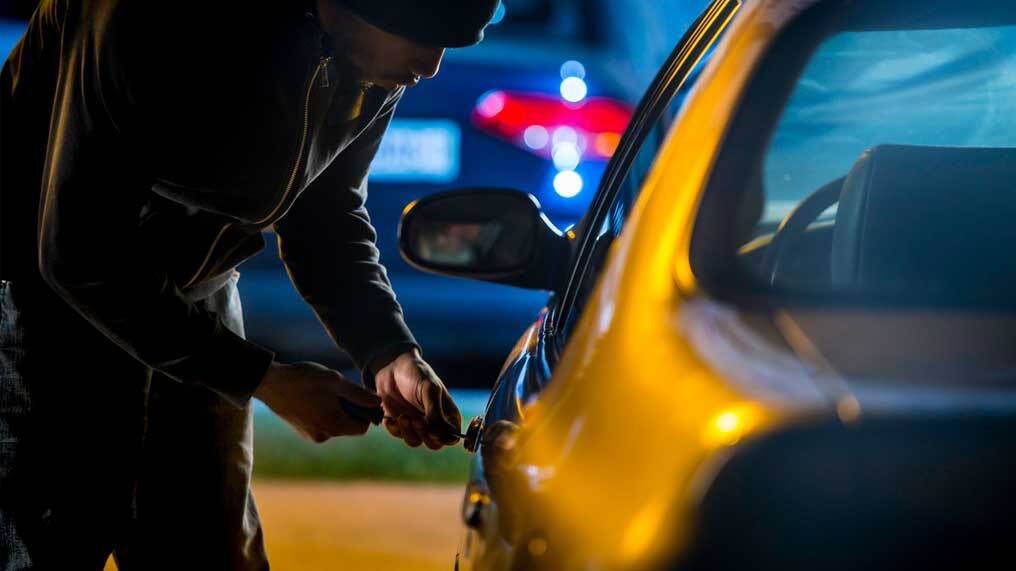Extreme weather can strike at any time, and it’s getting more common in the UK. From storms and floods to freezing temperatures, it’s important to know how to protect your car and stay safe on the roads.
Be prepared
It’s a good idea to keep an emergency kit in your car throughout the year, but as temperatures start to drop, you’ll appreciate having a torch, blanket, shovel, scraper and de-icer handy, just in case you get stuck. You should also carry snacks, a drink and your phone charger, too.
Here’s how you can protect your car from stormy weather, and steer clear of the most common dangers nature can throw our way.
Before driving in severe weather
General tips
If you have a journey coming up, keep up to date with the local weather forecasts. One simple way to do this is to sign up for Met Office alerts. You’ll have to make a judgement call on whether it’s safe enough to drive.
If the forecast doesn’t look good, you could consider using public transport instead of driving. And if the buses and trains are cancelled, that could be a sign that it’s too risky to head out in your car.
Storms and strong winds
Storms can bring down trees, power lines and debris, which pose a serious risk to parked cars. To reduce the chance of damage:
-
Park in a garage or sheltered area if possible.
-
Avoid parking under trees or near loose structures like fences or scaffolding.
-
Secure any outdoor items that could become airborne.
-
Secure or remove anything that’s attached to your car (like a roof rack). Strong winds and gusts could turn loose objects into projectiles.
Tip: If you must park outside, try to position your car with the front facing into the wind to reduce surface area exposure.
Heavy rain
It seems a given but make sure all windows and sunroofs are securely closed. It’s also worth checking your wiper blades, too - just in case they’re worn and need replacing.
Consider using winter or all-weather tyres if you have them. And don’t forget to check the tread depth of your tyres. The minimum legal limit in the UK is 1.6mm, although many car manufacturers recommend 3mm.
Tyres with 3mm tread depth offer significantly better grip in wet conditions, reducing stopping distances and giving you more time to react.
Flooding
Avoid parking your car in low areas known for flooding. If you can, try to move your car to higher ground before the rain hits.
If you need to drive, check your local flood risk before you leave. The Environment Agency offers a flood warning service via Gov.uk that alerts you to potential flooding in your area.
That way, you can plan alternative routes that stay clear from flood-prone areas.
Freezing temperatures
Cold weather can affect your car's battery, tyres and visibility. It also takes more power to start a cold engine. Here are some quick tips to prepare your car before the temperatures plummet:
- Check your battery - especially if you have an EV
- Make sure your tyres are properly inflated and have enough tread (3mm)
- Keep your fuel tank at least half full so the fuel line doesn't freeze
Find out more about how to get your car ready for winter.
Driving in severe weather

No one wants to, and sometimes it can’t be avoided... but if you find yourself on the road when bad weather arrives, here are some handy tips to follow:
Storms and strong winds
Be aware of gaps between cars and buildings that could be easily blown by side winds.
Leaving bigger gaps between yourself and the car in front gives you more time to react to any potential dangers or accidents that have happened.
Heavy rain
Driving in heavy rain can be dangerous, especially if water builds up on the road surface. Try not to drive through large puddles of water if you can. Not only is it harder to see the road surface and any potholes, but it could also result in aquaplaning, which can cause you to lose control of the car.
When it’s harder to see or there’s a build-up of water on the road, reduce your speed and increase the distance between yourself and other vehicles. Turn your headlights on to improve your vision and ability to respond to hazards.
Stick to main roads if you can, as these should be better maintained and safer to drive on compared to country roads.
Flooding
Floods can cause serious damage to cars, especially if water gets into the engine or electrics.
Never drive on flooded roads or through any flood water – even 30cm of water can float a car. If your route is blocked, try to park somewhere safe so you can find a different way to your destination.
Can’t park somewhere safe? If you have a voice-controlled smartphone or sat-nav built into your car, ask your device to give you a different route (to save you having to do this manually).
Freezing temperatures
To keep yourself comfortable and your windscreen clear throughout your journey, keep a warm flow of air circulating in your car. To remove any moisture build-up or condensation from forming, turn on the air conditioning or slightly open the window for a moment if it’s not raining.
Freezing temperatures can also mean ice on the roads, so take care especially when driving on roads that haven’t been gritted – drive slower around corners and bends to reduce any chance of drifting.
After severe weather

Hopefully you’ve arrived safely at your destination. Once the bad weather clears, or before you drive again, follow some of these basic checks to make your journey as smooth as possible:
Storms and strong winds
Check your car for any dents and damage that might need repairing. It's a good idea to do this as soon as possible so you’ll know if any damage has been caused by the severe weather.
Heavy rain
Make sure water hasn’t leaked inside your car. If it has, try and keep your car under shelter, or securely wrapped with a waterproof cover.
Once the bad weather passes, investigate the location of the leak so you can get it fixed.
Flooding
Don’t try and start a car that’s been in flood water. Get a professional to check your car for any engine or electrical damage.
Freezing temperatures
Park your car under cover or in a garage to help reduce any icy patches from forming again.
Cleaning your windows from condensation with a dry cloth will also help, too.
You could also check your car battery, wiper blades, fluid levels and brakes – but if you’re not planning to drive again for a while, do this a little closer to your next trip.
Sometimes, no matter how well you prepare, things can be out of your control. That’s why it’s a good idea to know what you're covered for under your car insurance policy.
It’s worth bearing in mind that if you leave your car unattended with the doors open and the keys in the ignition, you won’t be covered if someone steals it. So, when you’re busy de-icing your car or checking for damage, always stay vigilant.





